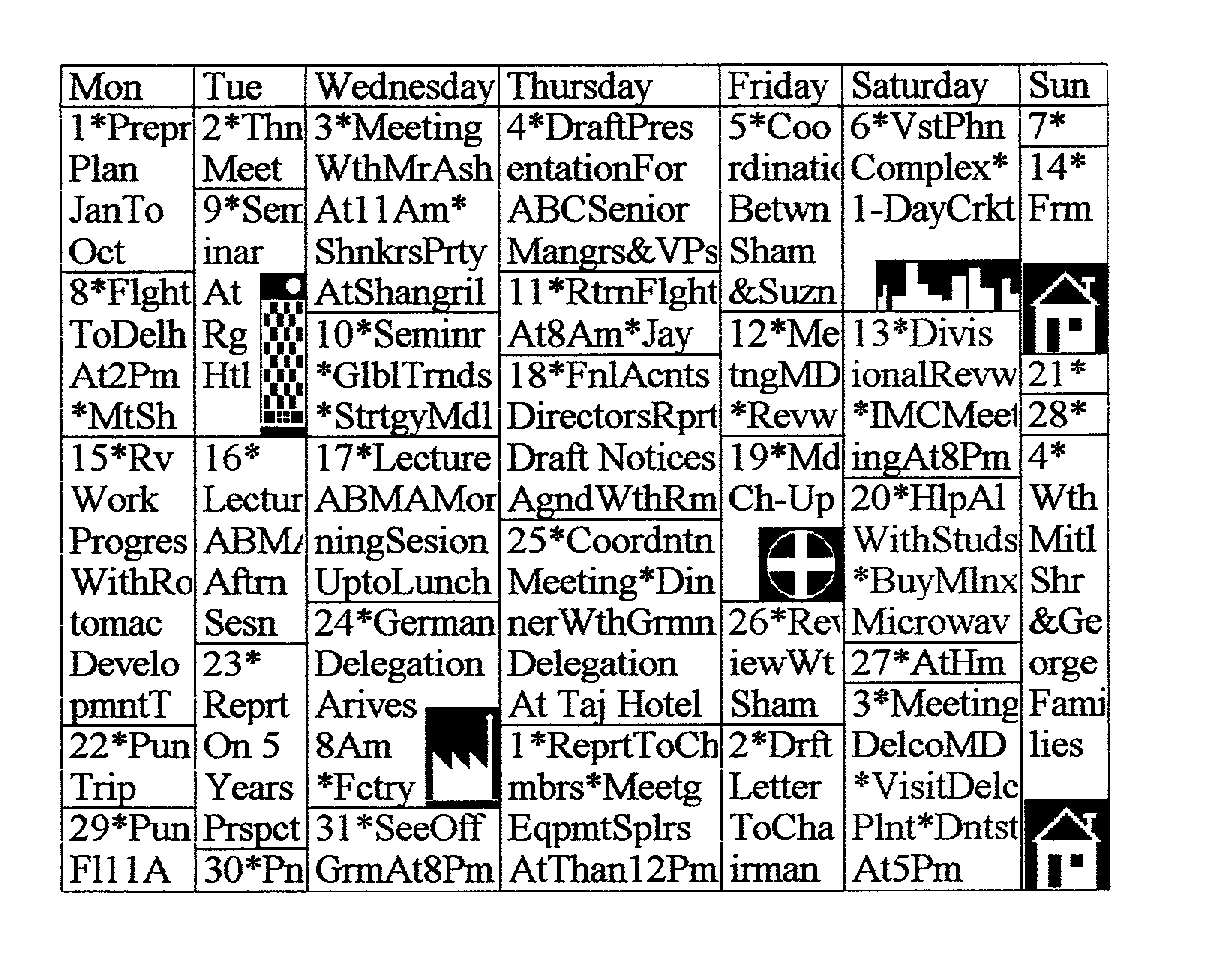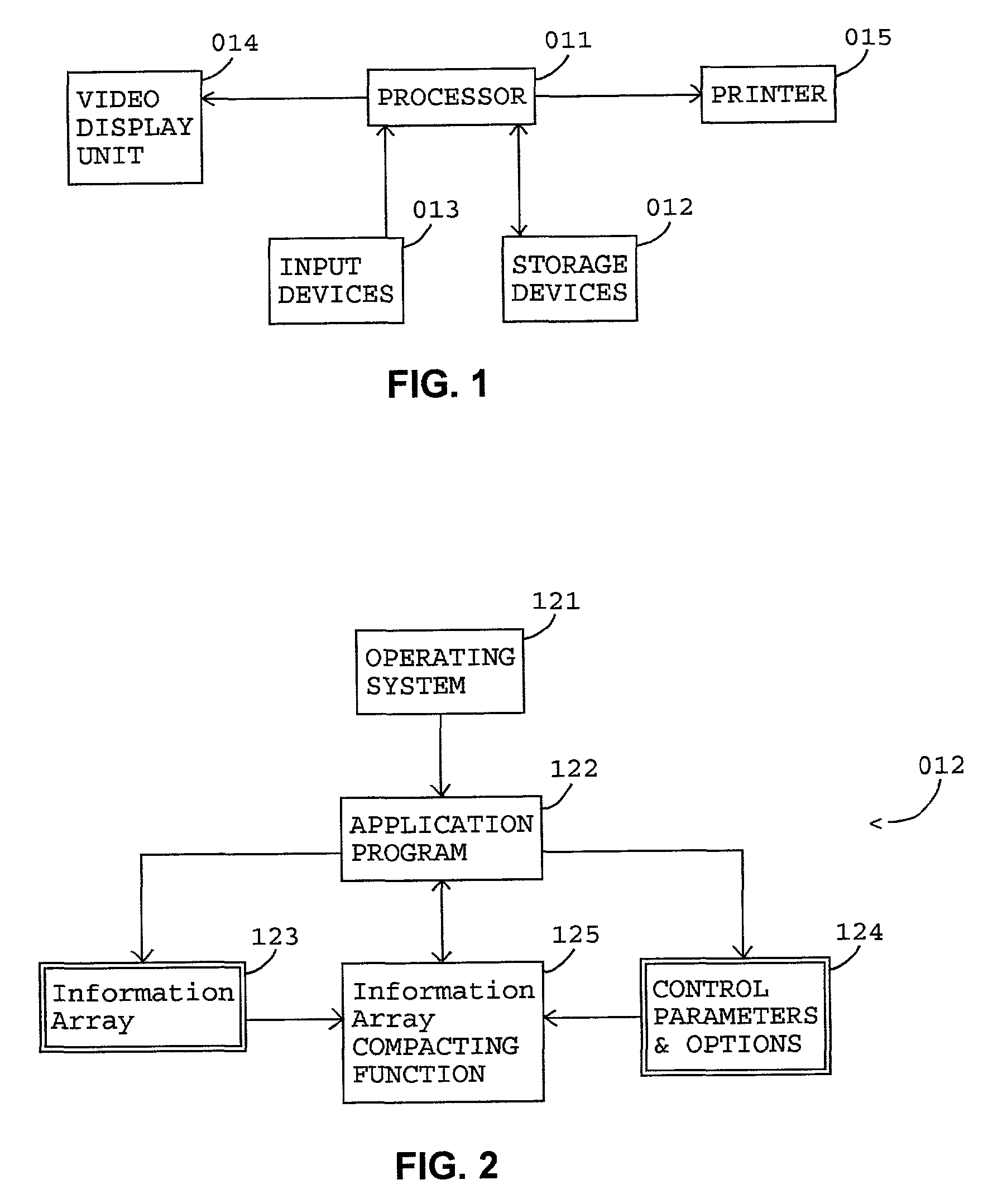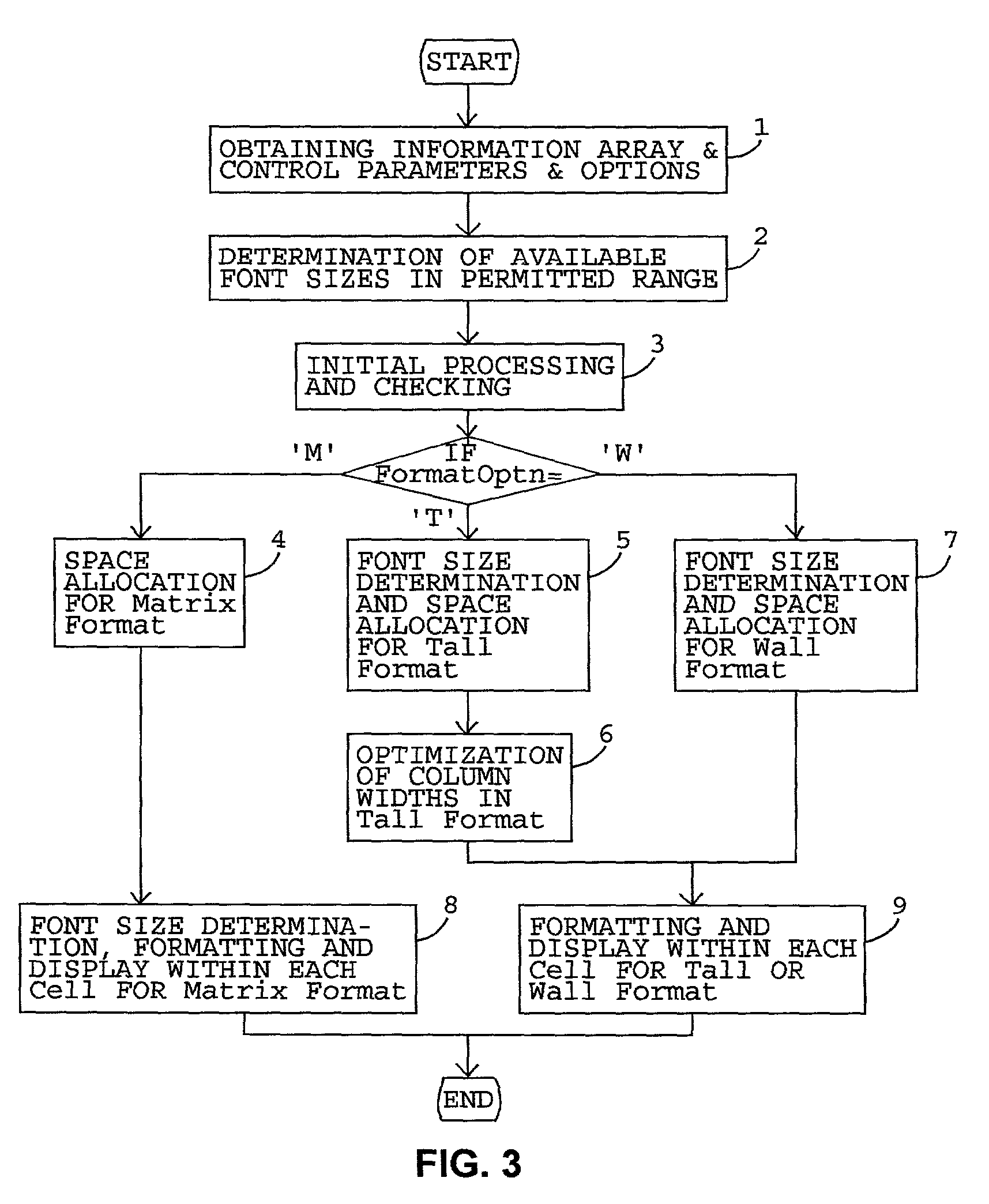Compacting an information array display to cope with two dimensional display space constraint
a technology of information arrays and display space, applied in computing, instruments, electric digital data processing, etc., can solve the problems of reducing the maximum possible readability, and reducing the amount of information occupied
- Summary
- Abstract
- Description
- Claims
- Application Information
AI Technical Summary
Benefits of technology
Problems solved by technology
Method used
Image
Examples
Embodiment Construction
aller than the table of FIG. 10. Parameter AlctnOptn=‘S’ and AvAbrvPc=15;
[0151]FIG. 12 is a rendering of the table of FIG. 10 using an embodiment of this invention. It shows a compacted Matrix Format which is approximately 50% smaller than the table of FIG. 10. Parameter AlctnOptn=‘S’ and AvAbrvPc=10;
[0152]FIG. 13 is a rendering of the table of FIG. 10 using an embodiment of this invention. It shows a compacted Matrix Format which is approximately 50% smaller than the table of FIG. 10. Parameter AlctnOptn=‘S’ and AvAbrvPc=30;
[0153]FIG. 14 is a rendering of an HTML table using Internet Explorer. This is a typical text-numeric matrix titled “Cost Analysis”;
[0154]FIG. 15 is a rendering of the table of FIG. 14 using an embodiment of this invention. It shows a compacted Matrix Format which is approximately 42% smaller than the table of FIG. 14. Parameter AlctnOptn=‘S’ and AvAbrvPc=25;
[0155]FIG. 16 is a rendering of an HTML table using Internet Explorer. This is a typical matrix titled “C...
PUM
 Login to View More
Login to View More Abstract
Description
Claims
Application Information
 Login to View More
Login to View More - R&D
- Intellectual Property
- Life Sciences
- Materials
- Tech Scout
- Unparalleled Data Quality
- Higher Quality Content
- 60% Fewer Hallucinations
Browse by: Latest US Patents, China's latest patents, Technical Efficacy Thesaurus, Application Domain, Technology Topic, Popular Technical Reports.
© 2025 PatSnap. All rights reserved.Legal|Privacy policy|Modern Slavery Act Transparency Statement|Sitemap|About US| Contact US: help@patsnap.com



